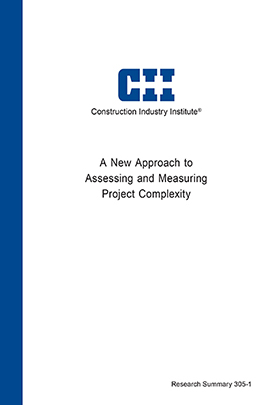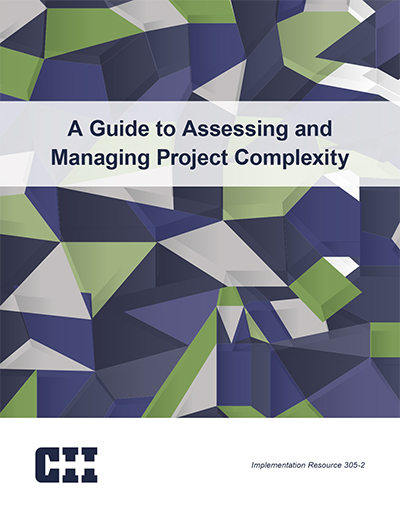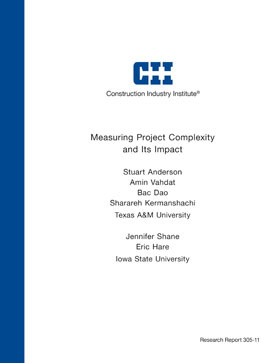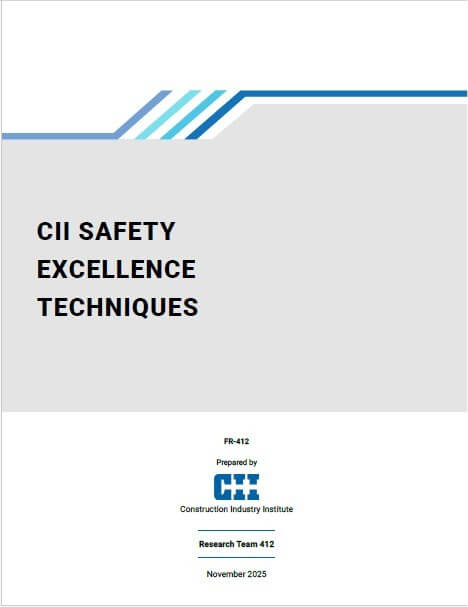
A New Approach to Assessing and Measuring Project Complexity
The Construction Industry Institute (CII) established Research Team 305 (RT-305), Measuring Project Complexity and Its Impact, and tasked it with developing a method of measuring project complexity and determining how that complexity drives project-related decisions. CII selected this area of research because project complexity is widely believed to affect project outcomes—in fact, complexity is often cited as a key cause when a project does not achieve cost, schedule, or functional objectives. The construction industry would benefit from having a definition of complexity that is specifically tailored to the planning and execution of projects.
In addition to defining project complexity, RT-305 was chartered to study the attributes of complexity and to identify the influence of project complexity on different aspects of projects, such as cost, schedule, quality, and project performance. The work expanded, and the team developed methods to measure complexity and identify strategies that mitigate and manage the negative effects of the identified attributes of complexity. The team framed this task with the following purpose statement:
The purpose of this project is to develop a methodology and tool(s) to help organizations identify, measure, and respond to project complexity. When applied the tool will encourage organizational change in awareness, behavior, and increase the likelihood of successfully achieving project goals.
Prior to moving forward with developing measures of complexity, RT-305 developed a working definition of project complexity:
Project complexity is the degree of interrelatedness between project attributes and interfaces, and their consequential impact on predictability and functionality.
The team defined complexity in terms of the number of attributes and their interactions when managing projects, rather than ascribing complexity to specific physical attributes (e.g., types of materials, quantities of materials, number of systems, or facility technology). Describing complexity in terms of project management was necessary to ensure that the process could be generalized across industry sectors, or within an industry sector but across different types of construction projects. To determine which complexity measures were significant in differentiating low- and high-complexity projects, RT-305 surveyed construction organizations to test 40 complexity attributes and 92 complexity indicators. Drawing on the responses from 44 projects, RT-305 identified that 37 of the original 92 indicators statistically differentiated low- from high-complexity projects. Since only three of the 37 indicators correlated directly to cost performance, and only one correlated to schedule performance, the survey results suggest that the level of complexity generally does not directly influence project outcomes. The relationship between complexity and performance appears to be indirect and dependent on the project team’s ability to identify and manage indicators of complexity.
RT-305 incorporated these findings into a tool to help project teams assess and manage a project-specific set of complexity attributes: the Excel-based Project Complexity and Management (PCAM) Tool. This tool enables teams to control the drivers of project complexity and to manage and mitigate the risks they pose. The PCAM Tool can be found in Implementation Resource 305-2, A Guide to Assessing and Managing Project Complexity.
RT-305 initially identified 40 complexity attributes and 92 indicators, and then tested them in a survey with indicator questions. The purpose of survey data was to determine which complexity measures were significant in differentiating between low- and high-complexity projects. The team received from 44 projects in all, with 14 responses for low-complexity projects and 30 responses for high-complexity projects. The data analysis resulted in 23 attributes and 37 complexity indicators, grouped into 11 categories that are significant in differentiating low complexity projects from high complexity projects. These complexity indicators are summarized in Table 1 of the research summary (Table 1, RS 305-1). The project complexity attributes and their indicators should be assessed uniquely for those indicators that are considered the most relevant to the specific conditions and influences describing a project’s complexity.



